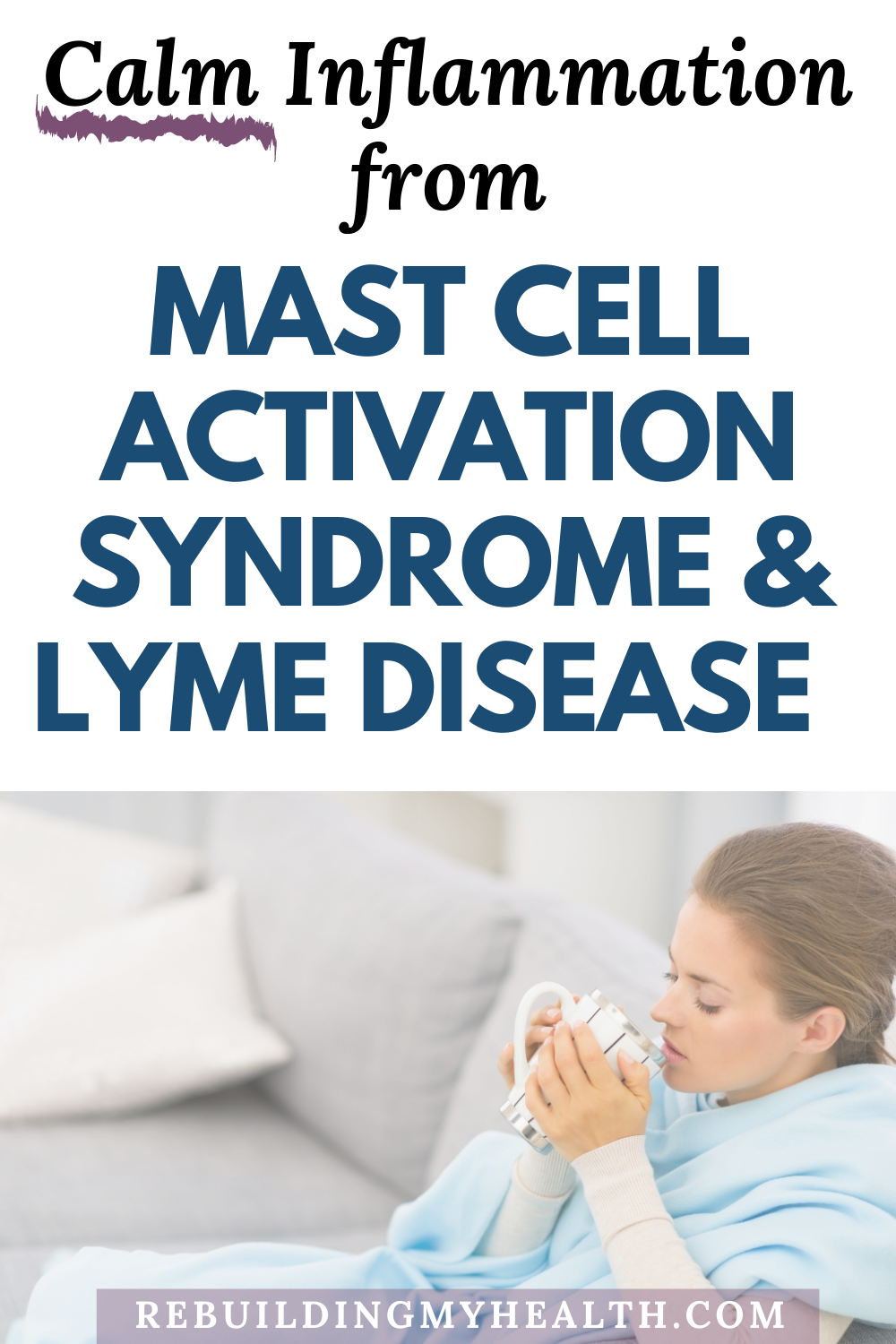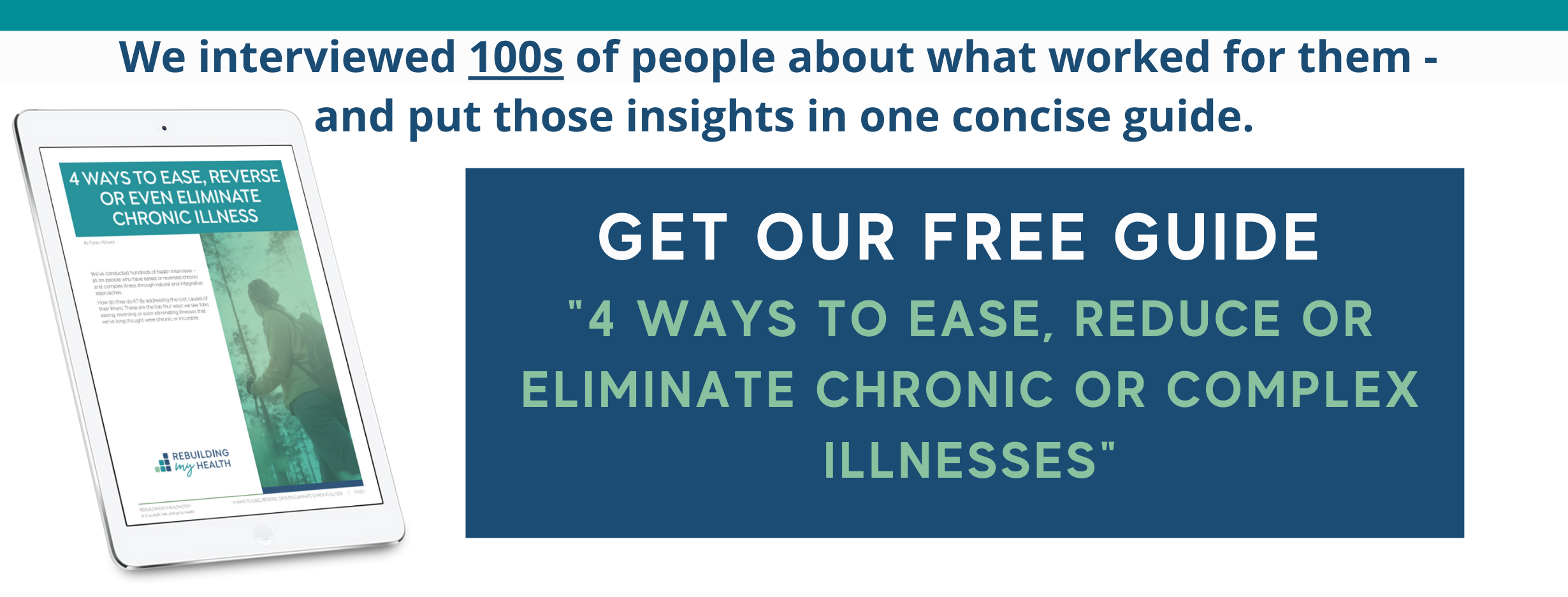Ohio Woman Halts Mast Cell Activation Syndrome, Lyme and More
“I was told so many times, because my labs were normal, that this was in my head. And eventually I started to believe it.”
– Beth O’Hara
For her 16th birthday, Beth O’Hara asked for one thing: her own copy of Gray’s Anatomy. She had always dreamed and planned on becoming a doctor.
And she seemed to be on track toward those long-held life plans. In college, despite working three jobs, she earned the grades to land three scholarship offers for medical school.
Then, Beth had to walk away from it all. Her health had always been fragile. Now, it had crumbled altogether.
She was in constant pain from a childhood injury and inflamed joints, and her body seemed to react to everything in and around it, from foods to moldy environments.
“It took all I could muster to graduate,” she says. “Then I had an existential crisis.”
‘Never Felt Well’
Beth’s health challenges began as an infant with digestive issues and allergies. Then, upon moving to a farmhouse at age seven, her allergies flared like never before.
“I never felt well as a child,” she says. “I didn’t have the energy other kids had.”
The house, she later learned, was full of black mold. Her skin was so itchy that she scratched until she bled. If she harvested green beans or fed corn to the chickens, she would end up in hives. And soon, she developed exercise-induced asthma.
Then at nine, she was kicked in the head and knocked out by a horse. At the time, she wasn’t evaluated for a concussion, but she now firmly believes she had a traumatic brain injury that actually altered her personality.
“How I experienced the world was really in line with high-functioning autism,” she says. “It was difficult for me to communicate and I had trouble interacting with kids. But I also developed a photographic memory and started excelling in school unlike before.”
Following the fall, she also developed severe anxiety and sleeping difficulties. Due to hypermobile joints (including rib joints) and injuries, she was in constant, severe pain.
By the time she was a teenager, she had turned to heavy drinking in social situations to numb the physical pain and feel normal around her peers.
It all came to a head in college, when the chronic pain turned debilitating.
Losing Hope
In the search for answers, Beth would see more than 50 different practitioners – some helpful, most not.
“I did everything I could in Western medicine, but I kept getting worse,” she says. “And I had reactions to many medications.”
“I was told so many times, because my labs were normal, that this was in my head,” she adds. “And eventually I started to believe it.”
Her moods would swing from deeply depressed to revved up. Medication for that resulted in a scary incident that dropped her temperature to 94 degrees and caused her to be extremely ill.
She tried birth control to regulate her hormones and frequent Benadryl to sleep.
Doctors also diagnosed her with rheumatoid arthritis, despite not having any RA markers, and started her on RA medications.
By the time she was in her late 20s, Beth was on multiple medications and walking with a cane.
She followed her doctor’s orders precisely, with no progress. After the most advanced Functional Medicine doctor she was seeing said he had tried everything he knew to do, Beth’s last bit of hope vanished.
“That was as devastating as not being able to go to medical school,” she recalls. “The whole way home, I sobbed. I had such little quality of life that I got through the day by thinking about how one day I would die and this would all be over.”
Uncovering Mast Cell Activation Syndrome (MCAS)
Beth, fortunately, soon found answers. On a friend’s recommendation, she took the 23andMe genetic test and the pieces began coming together.
Beth read everything she could about genetic variants and began training in genetic analysis.
“I loved it because it got me closer to the medical stuff,” she says.
Through her own research and a few helpful practitioners, she uncovered quite the list of diagnoses and ailments.
Chief among them was Mast Cell Activation Syndrome (MCAS), the cause of her body’s highly reactive state. Normally, mast cells help protect against invaders and help in healing. But with MCAS, the mast cells overreact, causing too much inflammation. The result can be severe allergies, hives, rashes, fatigue, and bodily aches and pains.
Beth describes those with MCAS as the “canaries in the coal mine,” who react more readily to toxins and chemicals in their environments.
She had been on a low-histamine diet for suspected histamine intolerance but wasn’t getting better. Finding MCAS explained why.
MCAS can be difficult to diagnose and really comes down to looking at symptoms, health history and food sensitivity testing, she says.
Lyme Disease and More
To truly get better, Beth had to address other significant health challenges, which she believes contributed to MCAS:
- Lyme disease and the co-infection, Bartonella – Beth recalls numerous tick bites as a child. Many people have underlying, chronic issues that contribute to MCAS, such as Lyme or mold toxicity.
- Mold toxicity – Living in moldy spaces triggered the allergies and other symptoms.
- Numerous food sensitivities – She found her personal food sensitivities, through testing and trial and error.
- Old injuries – Years after the horse incident, Beth learned she still had a broken tailbone and two compression fractures in her thoracic. Neither were treated or found at the time.
- Ehlers-Danlos Syndrome – EDS causes hypermobility of the joints.
- No proprioception – Beth’s spacial awareness was off, leading her to run into things throughout the day.
- Asperger’s – After the horse encounter as a child, Beth had developed many of the characteristics of Asperger’s, a form of autism: lack of facial expression, inability to empathize, and a monotone voice.
- A partially blocked airway – Through x-rays, she found that her airway was partially blocked, meaning she wasn’t receiving enough oxygen when she breathed. That likely degraded her sleep.
Calming Inflammation and More
Mostly on her own, and with online resources guiding her, Beth began addressing each condition. Because of her body’s highly reactive state, medications or supplements that worked for others often made her feel worse.
“Even in functional medicine a lot of treatment approaches are too aggressive for people with Mast Cell Activation Syndrome,” she says. “But the problem is a lot of people with chronic toxicity infections have Mast Cell Activation.”
Here’s what did work:
Diet
Because her body was so reactive, she pared down her diet to just 20 foods at one point. In particular, she eliminated triggers that seemed to increase her inflammation, including glutamine and nightshade foods, plus foods with high amounts of sulphur, lectins and oxalates.
She also eliminated foods that typically have high histamine levels, including processed foods, fermented items and even leftovers.
When she eliminated these triggers, her inflammation dropped, she felt better, and slept more soundly. And even more telling, after two weeks with a changed diet, she no longer needed a cane to walk.
Then she re-introduced foods one at a time and now has quite a varied diet.
Detox
For the mold toxicity, Lyme and co-infections, antibiotics and herbal approaches worsened the inflammation. Beth took binders to absorb and carry out the toxins – a step she wished she had taken before trying antibiotics and herbs.
Addressing detoxification in the right order made a huge difference, and is the missing piece in many failed antimicrobial and detox protocols.
Nutrient support
Through testing, she uncovered specific nutrient deficiencies, and used genetic analysis to enhance her understanding of her body’s needs. From there, she added multiple supplements and approaches that were right for her body:
- Magnesium Threonate, L-theanine and pulseless electrical activity (PEA) to support brain healing
- Boswellia and Chinese Skullcap to support the mast cells
- Diamine Oxidase to support histamine breakdown
Addressed Asperger’s
Beth worked hard to push through some of the limiting aspects of Asperger’s. She had deep empathy and compassion for others, but it was hard to communicate it. Reducing the root triggers like brain inflammation and mold toxicity helped tremendously.
She also went to voice coaching to add modulation in her voice. She worked with a system called the Enneagram to build emotional and social Intelligence, which helped her communicate effectively and excel at reading others.
She now finds that the quick mental processing associated with Asperger’s helps her process large amounts of information about complex clients, and others now find it impossible to tell she had these struggles earlier in life.
Airway clearing
Beth discovered her airway was 70% blocked, which caused sleep issues and made it difficult for her body to heal. Through sleep orthodontics with braces, and airway appliances, she was able to overcome this challenge.
Reduced stress
After underestimating the impact of stress, Beth reduced the stressors in her life and worked through emotional healing – and saw further gains in how she felt.
“It is easy to underestimate the impact of stress and early traumatic events on health,” she says. ”I found that through working with breathing practices, meditation, and Qigong, along with emotional healing, my physical healing was accelerated.”
Extending Hope – and Help – to Others
With dedicated work and focus, Beth calmed her Mast Cell Activation Syndrome and the other conditions.
She now eats a wide range of foods without allergies or inflammation.
Her moods and periods have normalized.
She no longer shows symptoms of Lyme and Bartonella. And addressing the mold toxicity changed everything.
And she has the energy to work 50 hours a week. On that note, Beth has come full circle. Though she didn’t become a conventional medical doctor, every day she helps others uncover their health roadblocks as a functional naturopath and functional genetic analyst.
Most importantly, she offers them hope and answers when nothing else has worked.
“It’s so healing for me to see people get better faster than I did,” she says. “These are people that couldn’t leave their houses. They would have panic attacks just getting outside because they were going to get a perfume exposure and go into anaphylaxis. Now they’re traveling and eating out and doing all kinds of stuff.”
Learn more about Beth and her practice, Mast Cell 360, and check out her report on the seven most common root causes of Mast Cell Activation Syndrome.
If you enjoyed this story, you might also like: Family Eases Ehlers-Danlos Syndrome, and More, with Diet, Exercise and a Chemical-Free Household.
The information on this site is for educational and inspirational purposes only and is not intended to replace the advice of qualified professionals. Keep in mind that what works for one person may not work for another. Always consult your healthcare practitioners before beginning new approaches or treatments. Some links on Rebuilding My Health may be affiliate links. This means that we may receive a commission - with no additional cost to you - if you make any purchases using those affiliate links. Rebuilding My Health is a participant in the Amazon Services LLC Associates Program. Learn more.



